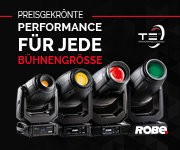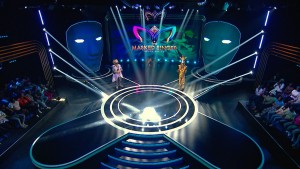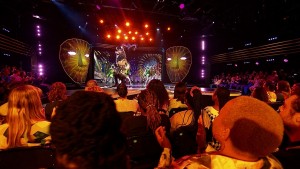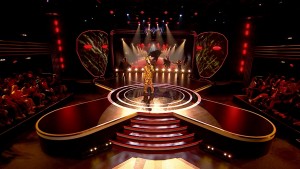Aktuelle News & Schlagzeilen
Robe helps lift the mask in South Africa
The second series of “The Masked Singer SA” was one of the most successful music TV shows of 2024, broadcast on SABC, and featuring a production lighting design created by Ryan Lombard and Joshua Cutts, based around the core components of 150 Robe moving lights.
All technical production was supplied by Blond Productions for the series which was recorded at the Studios on Harley facility in Randburg, Greater Johannesburg. Lombard and Cutts had previously worked together on “Family Feud” and “SA’s Got Talent”, so it made sense for them to once again pool their imaginations for “The Masked Singer SA”.
With Cutts coming in as a designer as well, Lombard made some changes to the original design based on what he had learned during Season 1, which Cutts looked at, adding some of his own ideas and finishing touches and building multiple new lighting looks. Cutts oversaw the lighting set up, programmed, and started off operating the run of shows as Lombard was busy with prior commitments, then Lombard took over once these were completed.
The Robe set up included twelve Esprites, twelve MMX Spots and twelve 600E Beams, 48 LEDBeam 100s, twelve MiniPointes, 24 CycFX4s, six LEDWash 300s, 24 LEDBeam 350s (newly purchased by Blond for the production), twelve iSpiider wash-beams and four MegaPointes plus a RoboSpot system controlling selected Esprites. Blond continues to steadily invest in Robe kit, supplied via South African distributor DWR.
The Esprites were a major element of the design, utilised to follow the artists during the performances, allowing Lombard and Cutts to lower the general lighting levels and achieve a greater depth through multi-layered separation effects. “They were also our essential ‘surgical’ front lights which also helped keep the giant scenic masks that were part of the set central to the action”, says Lombard.
The iSpiiders and LEDWash 300s were front light, used for audience washes and to create specific back and front light looks, sometimes augmented with LEDBeam 350s running in wash mode. The LEDBeam 350s were also used as more traditional beams technology.
MMX Spots were used for side light and dappled gobo work on the stage as well as to infill on the masks in some songs to enhance the projected images. The 600E Beams were rigged strategically to fire beams in from the sides for extra effect, while the CycFX4s provided additional rear eye-candy and pixel effects behind the audience.
MiniPointes were positioned behind the scenic masks where they created visual effects when the masks opened. The compact fixtures also generated general visual interest around the stage including beam-work.
Many of shows were pre-recorded to preserve the mystery surrounding the stars behind the masks, and the studio’s 6 metres of headroom heightened the challenge of maximising the space available. The studio’s house lighting grid was used for hanging lighting positions, using the fixtures to craft plenty of low angled lighting. The stage was 900 mm high, and the masks were 4 metres high, leaving just shy of a metre’s space for squeezing in the lighting fixtures. “The calculations for where lights were rigged were complex”, says Lombard. “They had to be spot on.”
Michael Gill’s set design featured several video walls with content run via the media server - including virtual lighting scenes created in Unreal Engine - all triggered by the lighting console. Lombard, Cutts and Gill all worked closely to evolve the aesthetics and ensure production values matched the stature of the “Masked Singer” franchise and the expectations of producers Rose and Oaks. Integral to this process was Gill’s drafting expert Nico Potgieter, who produced all the visualisation files.
The studio schedule was tight. Cutts and Lombard would plot songs at the weekend, nailing as many as possible ahead of the shoot days Monday through Friday, with only a small daily window to catch up on those they didn’t manage to deal with during the previous weekend, or to plot those tracks that they had only just received.
“We had to be very flexible as things changed and swapped constantly”, says Lombard, adding that Cutts was “incredible in getting the show up and running”. Lombard and Cutts have different operating styles on the consoles, and Lombard described the collab as “a great learning experience that I can and will apply to my future projects”.
One episode a day was shot over a 3-week schedule, during which four songs a day were recorded, adding up to approximately 24 songs a week. A large upstage screen was flanked left and right by two 4-metre-high scenic masks a bit further downstage. The judges panel was in front of that mid-way back in the middle of the audience, with another screen behind them, showing logos and backgrounds for reverse shots.
Projections running via two media servers were mapped onto the two scenic masks, with video content - CGI and graphical elements - created by Digital Union. The series was directed by Jonathan Bullen, who assisted and guided the visual teams and oversaw the initial episodes, after which Nadia White - also the Season 1 director - took over.
(Photos: Rose & Oaks Media)
SCHLAGZEILEN
news archiv
suche
© 1999 - 2025 Entertainment Technology Press Limited News Stories











